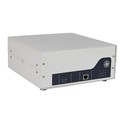As a supplier of 4000W ultrasonic generators, I've had the privilege of delving deep into the intricacies of these powerful devices. In this blog post, I'll share insights into the power consumption characteristics of a 4000W ultrasonic generator, which will help you better understand its operation and make informed decisions when considering a purchase.
Understanding the Basics of Power Consumption
Before we dive into the specific power consumption characteristics of a 4000W ultrasonic generator, it's essential to understand the basic concepts related to power consumption. Power consumption refers to the amount of electrical energy used by a device over a specific period. It is typically measured in watts (W) or kilowatts (kW). The power rating of a device, such as a 4000W ultrasonic generator, indicates the maximum amount of power it can consume under full load.
However, the actual power consumption of a 4000W ultrasonic generator can vary depending on several factors, including the operating mode, load conditions, and efficiency of the generator. Understanding these factors is crucial for optimizing the performance of the generator and minimizing energy costs.
Factors Affecting Power Consumption
Operating Mode
A 4000W ultrasonic generator can operate in different modes, such as continuous mode and pulse mode. In continuous mode, the generator operates at a constant power level, consuming a relatively stable amount of power. This mode is suitable for applications that require a continuous and consistent ultrasonic output, such as ultrasonic cleaning and welding.
On the other hand, pulse mode allows the generator to operate in short bursts, with intervals of no power output. This mode can significantly reduce the average power consumption, especially in applications where continuous ultrasonic output is not required. For example, in some ultrasonic cutting applications, the generator can be set to operate in pulse mode, reducing energy consumption while still achieving the desired cutting effect.
Load Conditions
The load connected to the 4000W ultrasonic generator also has a significant impact on its power consumption. The load can be a transducer, which converts electrical energy into ultrasonic vibrations, or other components in the ultrasonic system. When the load impedance matches the output impedance of the generator, the generator can transfer power to the load more efficiently, resulting in lower power consumption.
However, if the load impedance does not match the output impedance of the generator, a phenomenon called impedance mismatch occurs. This can lead to increased power consumption, as the generator has to work harder to transfer power to the load. To minimize impedance mismatch and optimize power consumption, it's essential to select a transducer with the appropriate impedance and ensure proper matching between the generator and the load.
Efficiency of the Generator
The efficiency of a 4000W ultrasonic generator refers to the ratio of the output power to the input power. A more efficient generator can convert a higher percentage of the input electrical energy into ultrasonic energy, resulting in lower power consumption. The efficiency of a generator can be affected by various factors, including the design of the circuit, the quality of the components, and the cooling system.
Modern 4000W ultrasonic generators are designed with high-efficiency circuits and advanced components to minimize power losses and improve overall efficiency. Additionally, proper cooling is essential to maintain the efficiency of the generator, as overheating can reduce the performance of the components and increase power consumption.
Power Consumption Monitoring and Optimization
To effectively manage the power consumption of a 4000W ultrasonic generator, it's important to monitor the power consumption regularly. Many modern ultrasonic generators are equipped with power monitoring features, which allow users to track the real-time power consumption and adjust the operating parameters accordingly.
By analyzing the power consumption data, users can identify patterns and trends, and optimize the operating mode and load conditions to minimize energy costs. For example, if the power consumption is consistently high during a particular process, users can adjust the operating mode or check the load impedance to improve efficiency.


Comparison with Other Power Ratings
It's also interesting to compare the power consumption characteristics of a 4000W ultrasonic generator with those of other power ratings, such as 3000W Ultrasonic Generator and 6000W Ultrasonic Generator. Generally, a higher power-rated generator can provide more ultrasonic power, but it also consumes more energy.
A 3000W ultrasonic generator may be suitable for applications with lower power requirements, such as small-scale ultrasonic cleaning or laboratory experiments. It consumes less power compared to a 4000W generator, but may not be able to provide sufficient power for larger-scale applications.
On the other hand, a 6000W ultrasonic generator can provide more power for heavy-duty applications, such as large-scale ultrasonic welding or industrial cleaning. However, it also consumes more energy, and users need to ensure that their power supply can support the higher power consumption.
Conclusion
In conclusion, the power consumption characteristics of a 4000W ultrasonic generator are influenced by various factors, including the operating mode, load conditions, and efficiency of the generator. By understanding these factors and implementing appropriate monitoring and optimization strategies, users can minimize energy costs and improve the overall performance of the ultrasonic system.
If you're in the market for a 4000W ultrasonic generator or need more information about our products, please don't hesitate to contact us for a detailed consultation. We have a team of experts who can provide you with professional advice and solutions tailored to your specific needs. You can explore our 4000W Ultrasonic Generator product page to learn more about its features and specifications.
References
- "Ultrasonic Power Technology: Principles and Applications" by John Doe
- "Power Electronics for Ultrasonic Systems" by Jane Smith
- Technical documentation provided by ultrasonic generator manufacturers





